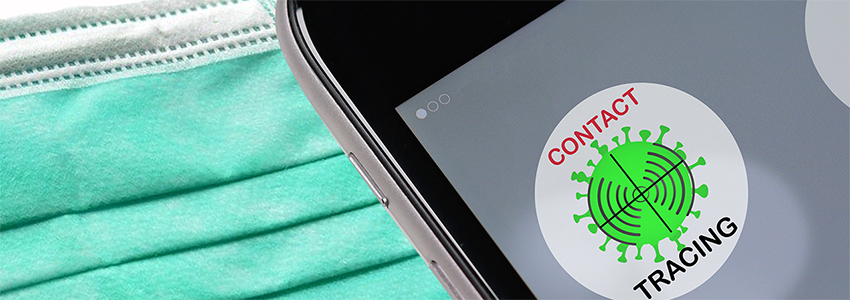Test, Tag and Trace: A digital solution for getting back to the office safely

7 September 2020
As people across the UK gradually return to offices, a widely available, low-cost technology can help business protect their employees and ensure a COVID-safe workplace.
Drawing upon an easy-to-implement digital infrastructure, the Test, Tag and Trace approach developed at the Institute for Manufacturing is already in use in a major bank in Canada, a large multinational pharmaceutical company in Europe, and leading meat processor companies in North America. Carefully implemented and properly communicated to employees, it allows offices to open safely while the pandemic is still active.
When the pandemic is over, the same infrastructure could continue to provide employees with a secure working environment that could be quickly adapted to new circumstances and help minimise future disruption.
Secure and safe
At the core of this project is the secure and safe traceability of users with the support of digital technologies. The proposed approach encompasses the need for better management of processes which can limit infection spread, including management of employee movements, physical distancing, segmentation of personnel into groups, and coordination of sanitization activities.
The presence of a digital infrastructure helps to minimise the number of infringements by ensuring that the rules are clear and properly explained. This solution provides both employee visibility and privacy, acting as a digital twin when they are at work but conferring invisibility on the employee the moment they leave the site.
How it works
- TEST
First, each member of staff is tested for COVID-19. Initially, this could be done by taking their temperature but laboratory testing could be introduced later as it becomes more widely available and turnaround times become faster. If the test proves negative, the employee will be certified and their available-for-work status uploaded anonymously to a secure database. They are now safe to enter the controlled workspace.
- TAG
Next, a lightweight Bluetooth tag, roughly the size of a stick of gum attached to an ID badge, swipe card or pocket, will be read by hubs strategically placed at key points around the building or site, and at entrances and exits.
- TRACE
As they move around, each employee’s tag sends a signal to the hubs they encounter, which feed information to a database. Real-time data analytics match employee locations with a set of rules assigned to their role, check that they are in an authorised area at an appropriate time and within the safe limit of number of people for that particular workspace (see Figure 1). In addition, the employee could also choose to have an app on their phone which warns them if rules have been breached nearby or if there are places they should avoid.

Figure 1: Real-time visibility of employees
With the Test, Tag and Trace system implemented: The illustration on the left indicates staff location; the dots turn red when social distance is breached. The illustration on the right shows a warning that four staff members in the room exceeds the assigned limit of three.
A digital infrastructure for a safe working environment
Governments around the world are setting out operational guidance for businesses preparing for a new way of working. While these recommendations are rightly informed by expert advice from clinicians, epidemiologists, infectious disease and public health specialists, they have thus far ignored the critical role technology could play in making the workplace a safer place for employees.
The digitally-enabled Test, Tag and Trace approach will mean employees can get on with their work, confident that they will be alerted to any unsafe behaviours, either by themselves or their colleagues, playing a valuable part in building strong procedures and confidence that people can return to the office safely.
Webinar
Dr Veronica Martinez and Dr Mahsa Honary presented more about this research during a webinar - covering how the system works and answering questions from the audience.
Press
The researchers are also available for interview. For press enquiries, please contact Jason Naselli, Content and Communications Manager, at jvn22@cam.ac.uk
About the research
This research acknowledges the support of the EPSRC New Industrial Systems: OMMS - Optimising Me Manufacturing System research grant [EP/R022534/1].
For more information contact Dr Martinez at vm338@cam.ac.uk
Reference to the academic publication
Honary M., Martinez V., Wlazlowski T., Helal S., von Oertzen H. and Honary S. (2020) “Getting the country back to work, safely: A digital solution”, ACM Digital Government: Research and Practice, COVID-19: Rapid Responses, Government Policies, and Impacts. 1(1).









